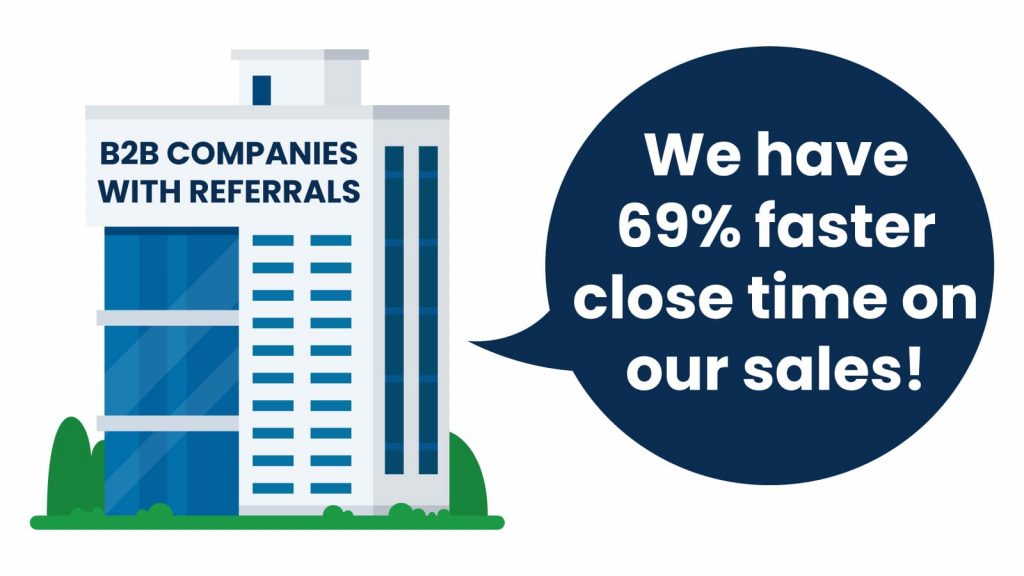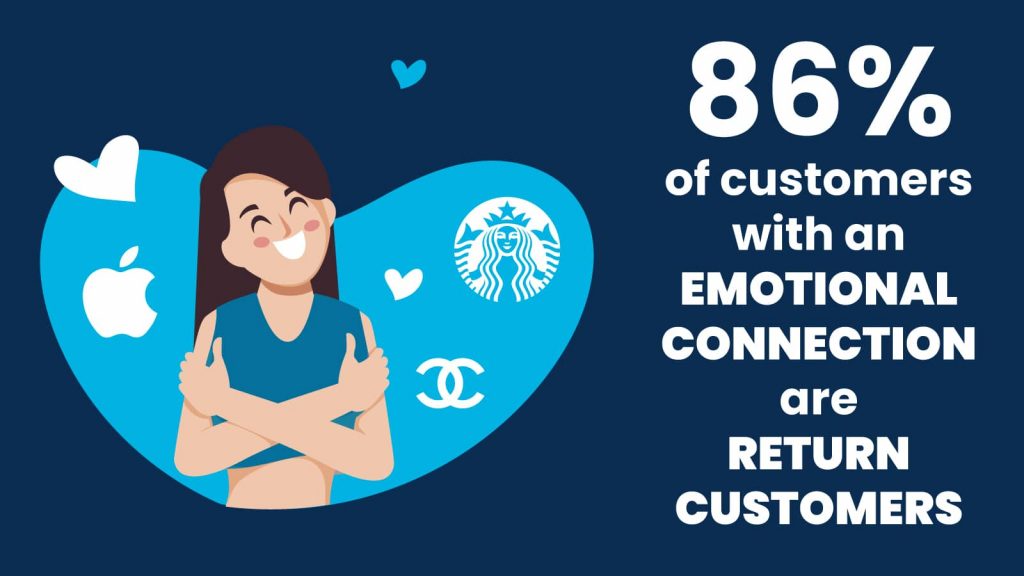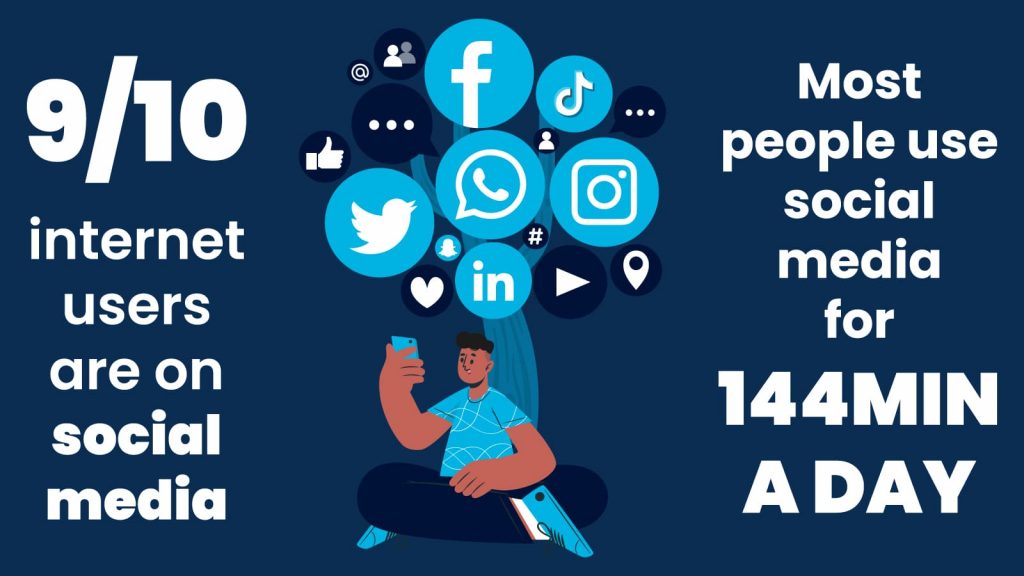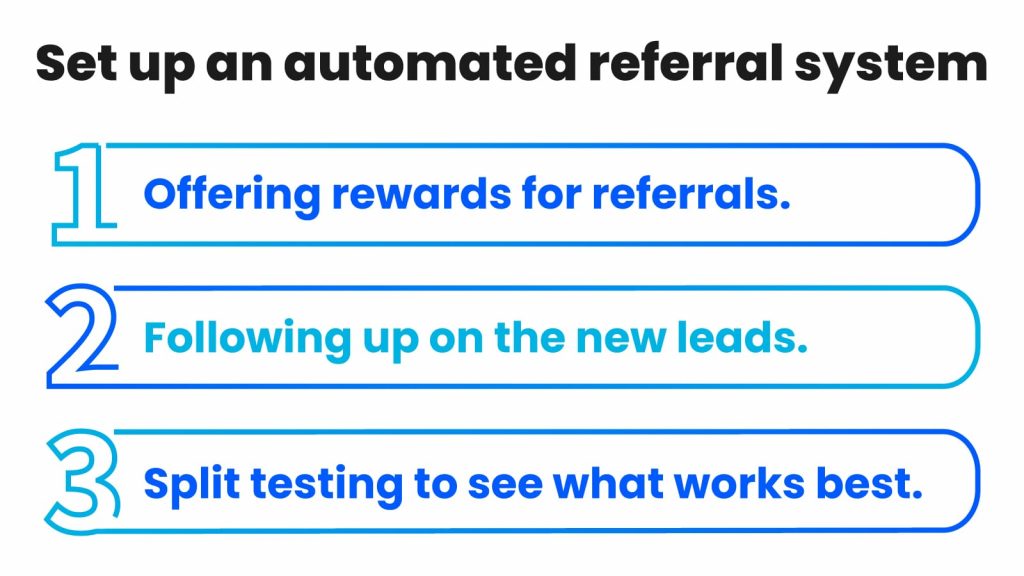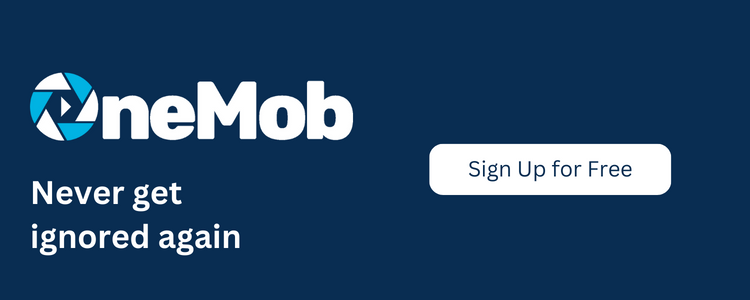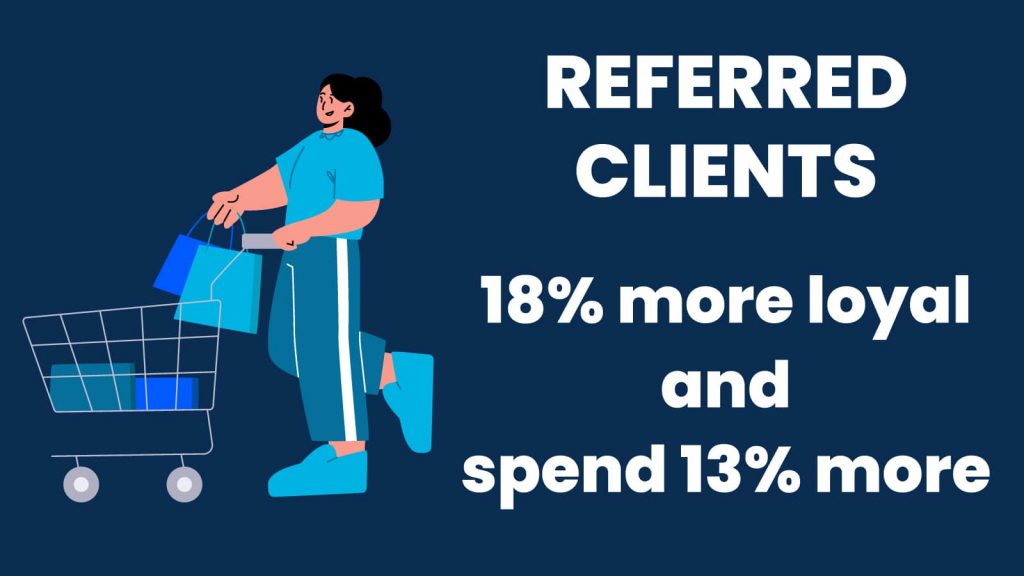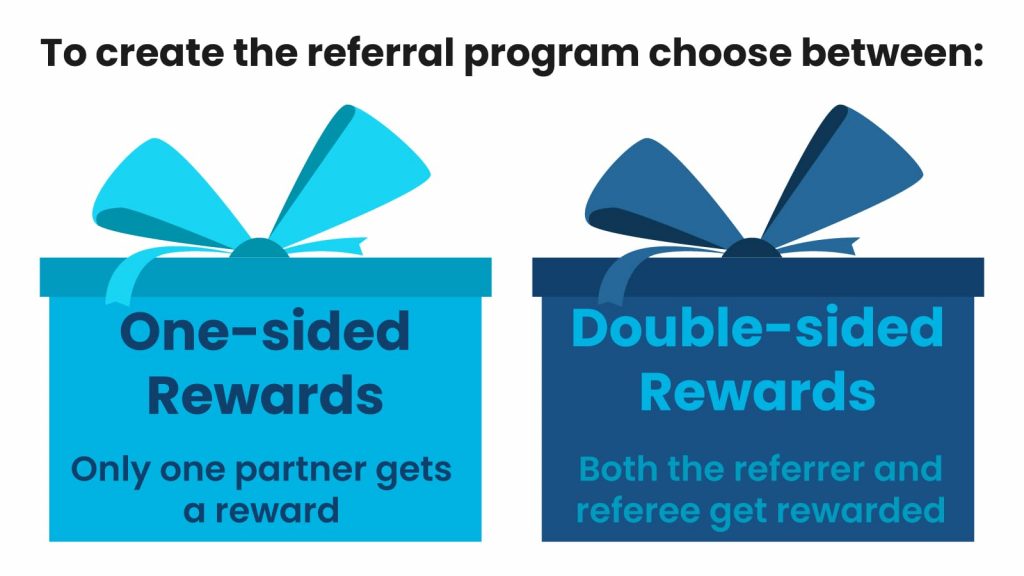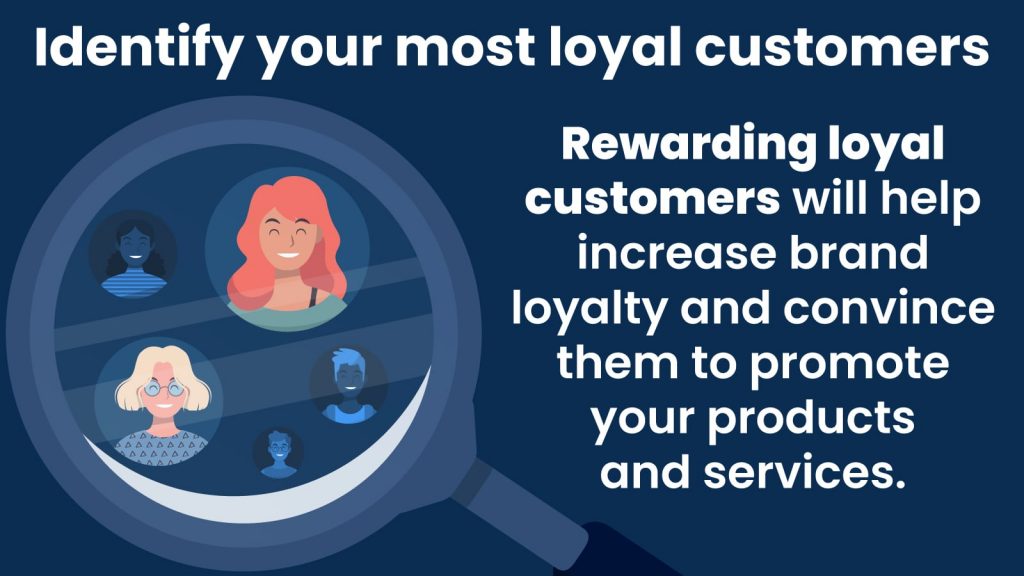Getting referrals in sales is essential to scaling your business and income. Learning how to generate business referrals can be a game-changer.
So what is a business referral? A business referral is when someone (company or individual) in your network recommends you or your business to a new client or prospect. This creates organic conversions, conversions that you or your company did not have to work on obtaining personally.
Sales referrals can be an essential part of your business and marketing strategy. When clients are happy with the products or services you provide and spread word-of-mouth advertising free of charge, you can reap the benefits without spending money, time, or other resources to find potential customers and clients.
This type of referral is very coveted in the sales world.
In fact, B2B companies with referrals have reported a 69% faster close time on their sales. These are the kind of numbers that you will want to incorporate into your sales plan.
Creating sales referrals from a customer should motivate you to keep all your customers happy. 83% of happy customers are willing to refer businesses and prospects to the companies that have satisfied them the most.
This guide will teach you the importance of happy customers and different ways to leverage positive client experiences for your company. This includes creating referrals and various methods to use to encourage this type of behavior.
Why Building Good Relationships With Clients is Key to Getting Referrals
Building good customer relationships is essential to getting referrals in sales. However, building a good relationship will result in referrals, customer retention, and future sales with happy customers.
Did you know 86% of customers with an “emotional connection” with a business or a brand are likelier to be return customers?
This stat reinforces the idea that people do not just want a good product or service anymore. They want the whole package, which includes feeling connected to the brand or the people they work with one-on-one in the company.
Building good customer relationships is essential, but how do you get started? The first thing you need to do is change your mindset. Too many people in sales think short term – the customer in front of them, closing that sale and earning that commission. To work towards good customer relationships, you must start thinking long-term.
Long-term thinking includes following up after the sale to ensure customer satisfaction. Customers will notice this level of customer service and commitment. In turn, they will think of you in the future when they, or someone they know, needs products and services your company offers.
There are other steps you can take in this relationship. These include having open communication, building trust, and showing your personality.
When you are ready to ask for referrals, be genuine. Start by asking how you are doing in their relationship – this could include their happiness with you as a rep, your ability to solve problems, or their satisfaction with the overall service. Once you know your customer is happy, you can ask them to tell their friends and family about your brand. Be genuine and show gratitude.
Send Targeted Emails to Get More Referrals
A popular way people are getting referrals in sales is by sending targeted emails. Email marketing is a popular and cost-efficient approach to sales and marketing for all brands. But how much do you know about it?
Even if you are already utilizing email marketing, you might not be using all the tools at your disposal, such as referral emails. So what is a referral email? A referral email is a section of a sales email or newsletter that offers some incentive for the receiver to refer a friend. Often this is financial, like a discount on future products or even being alerted to new products before the general public.
Writing a referral email is similar to other types of email marketing.
- You will want to personalize the email, use a friendly tone and emphasize mutual connections. If your company and the customer have connections like other brands or people in a shared network in common, highlight that in your email. Remember, customers like a personal connection to a brand, which is a great way to establish one.
- Create a strong subject line. The subject should be eye-catching and make the receiver want to open the email to see what information is inside. However, be sure to be straightforward and do not use clickbait. Make sure your email body answers the promise of the subject.
- Remind the reader of your product’s value. By reminding them of the quality of your product or services, they will be more likely to share this information with others.
How to Utilize Social Media and Leverage Referral Programs
Did you know that 92% of consumers trust word-of-mouth recommendations over other types of advertising? Also, in today’s world, word of mouth does not only mean face-to-face, so what someone writes about a brand on social media can have a significant impact in getting referrals in sales.
Using social media is not only a good idea but also imperative to your success. 9 out of 10 internet users are on social media. Not only are 90% of all internet users using social media, but they are also engaged. Most people use social media for 144 minutes a day. That is more than 2 hours a day to catch up with the people they know and the world around them and learn about brands they can spend their money with.
Over 4 billion people are active social media users. This is a massive pool of potential customers to grow your business. Social media is a cheap way to spread word of mouth and create brand awareness. By creating a brand with a humanized image and a story, you can form personal connections that turn into sales and referrals.
Finding the best social media avenues may take some trial and error. Think about the demographics of your average customer and compare that to each social media. Someone selling vacation packages for retirees would not choose Instagram first; they may go to Facebook as there is an older demographic there.
Building an Automated Referral System for Your Business
Getting referrals in sales based on the services and products you provide and the relationships you build. Creating an automated referral system is better. So, how do you design your business so that referrals come in automatically?
There are three main steps to setting up an automated referral system:
- Offering rewards for referrals.
- Following up on the new leads.
- Split testing to see what works best.
Simple, right?
It can be. Let’s look at it a little closer.
Offering rewards for referrals. This works because people want something for their time. If you are going to incentivize your referral program, you should start by defining the incentive and what needs to be done to claim the reward. For instance, your incentive might be a $25.00 gift card to your business, and to get the reward, they must give you a lead who purchases a product or service. Once you define the incentive, you must follow through. If you do, this will help your brand image.
Follow up on your leads. If your clients are going out of their way to refer business, the least you can do is follow up promptly. You must have a system in place to respond to leads immediately (this could be an automated email) and then follow up within a specified time with a voice call to set an appointment.
Finally, with any new marketing venture you try, you need to track your progress and try different things. Make comparisons between campaigns. This will help you determine what works best for your brand and on what social media channels.
Set Up a Great Rewards Program
Getting referrals in sales can be made much easier by setting up a great rewards program. You want referred customers and clients as part of your overall customer mix.
Statistics tell us that referred clients are 18% more loyal and spend 13% more than non-referred customers.
Referred customers are beneficial to a company, but being referred is also preferred for customers. 74% of customers report that recommendations from people they know are a key driver of their purchasing decisions. Customers rely on word-of-mouth brand information between two and ten times more than paid advertising. So, as you can see, the referral process is essential for both the customers and the company.
So, how do you build a fabulous referral program? Set up a rewards program that is beneficial for both parties. Gain new prospects while rewarding customers and spreading the word about your brand.
Explain to your customers how your rewards program works. You can do this by creating a simple landing page that explains everything in detail.
Create referral templates your customer can use, and provide images and other information they can easily attach to emails or social media accounts. Give them tracking ability to allow them to get credit for anyone who becomes a customer based on their hard work and dedication in talking about your brand.
Reward Referrals as Generously as Possible
One of the difficulties with getting referrals in sales and running referral programs is that your average customer is more tech and financial savvy than ever. Referral programs are similar to affiliate programs, except that the referrals come from current and past customers.
Many different companies have referral programs. If you want your customers to focus on referring people to your brand, you have to be as generous as possible with the rewards you offer.
To create the program right for your business and to get started in the planning process, you will need to choose between the two most common models:
One-sided Rewards: only one partner (the referrer or the referee) gets a reward.
Double-sided Rewards: Both the referrer and referee get rewarded.
Double-sided rewards are the most popular. Using this type of system will allow you to give an incentive to all parties. For example, the person who refers another customer can get a cash reward of 5% of the total amount their referrer spent. The new customer gets 10% off their first entire purchase. This will allow you to reward both and incentivize them to refer friends and be referees.
By allowing satisfied customers to refer their friends and families, you will reward them for sending business your way. If you give discounts and incentives to new customers, they will also want to tell people what a great experience they had with your company. This will allow you to leverage the influence of all your customers.
Promote Your Referral Program on Your Website
Sometimes the simplest solution is the best solution. If you are brainstorming ways to get referrals in sales, one of the best things you can do is promote your referral program on your website.
For this method to work, you do not want to bury this link. It is okay to also have the referral link in your footer links. But that would be a secondary spot, as many people will never look at your footer links. Add this link to a prominent spot on your website, such as the top header. Make sure it is descriptive and will get the click.
The wording should be obvious and make people want to learn more. For instance, you will want to make it short and snappy but show you are offering something. Examples could be:
Refer a friend and earn $25.00.
Learn How To Earn Money By Posting Our Brand on Social Media
Tell your friends about us, and earn a gift card.
Besides your home page and the footer, there are other spots to consider. Consider including referral links on your highest-trafficked pages. The more eyeballs that see it, the more likely you will start generating some referrals.
Use all types of creatives, not just text links. This can include creating banner ads, infographics, and other media-rich content to promote your referral program. This will allow you to also add your logo and primary colors, allowing the referral advertisement to stay on brand and enhance the look and feel of your website.
How to Measure the Success of Your Referral Program
Getting referrals in sales is a great goal to have. You should do whatever you can to make your referral program work. However, understand that this is a marketing campaign. Like all other campaigns, you must track and measure your progress to get the most out of this program.
During the implementation process, you should compare the cost of running the program (including paying incentives) with the new customer revenue. Make sure that you are making money on this program. However, ensure you are giving a high enough incentive to get the newest business. This is a fine line you will be balancing. It might take some trial and error to get it correct.
Identify your most loyal customers and target them for your program. This will allow you to send personal invitations to the customers who deserve the most incentive. Rewarding loyal customers will help increase brand loyalty and convince them to promote your products and services.
Give out tracking links that will allow you to track each referrer. This will let you know who is bringing in the newest customers and the percentage of new customers from your referral program versus other organic traffic and word-of-mouth advertising.
Take the time to study the results of the program every so often. This is an excellent quarterly exercise that will allow you to see how well it is working and where you can tweak it for additional profits and a smoother ran program.
Final Thoughts
A good referral program can be essential for growing your sales and creating brand loyalty. In today’s market, a company can not succeed with a quality product alone. Each brand needs to find a way to connect to its audience. This connection can make the difference between a one-time sale and a repeat customer.
A referral program can help create brand loyalty. By offering an incentive to promote your brand, you reward current customers and create an atmosphere where new, loyal customers can be made.
Customers who participate in your referral program will be able to create customer written content that can be posted across multiple channels. This will get your company out in front of many people that may have never been exposed to your brand. It can also make people familiar with your company see it in a new light as a friend or family member promotes it, which carries more weight than traditional advertising.
Even though there is a cost associated with running a referral program, the benefits far outweigh the cost, and the time you will put into making your program a success!


